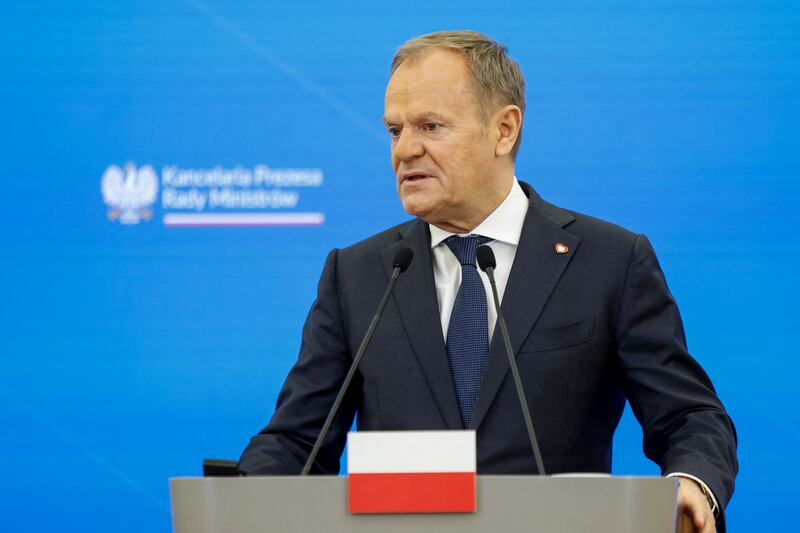Young women in slinky dresses and spike-heeled shoes straggled out of nightclubs on the Champs-Élysées at 6am on July 14th. Martial music blared from loudspeakers. Street-cleaning machines washed down the avenue in preparation for France’s annual show of military might.
Everything spoke to me of Ukraine. A few hours later four Caesar howitzers, billed as “the pride of French artillerymen”, would roll down the avenue in the Bastille Day parade. France has sent 18 of the fast-firing pieces – a quarter of its arsenal – to Ukraine. It will take a year and a half to replace them, symptomatic of a Nato-wide shortage in ground weapons.
Nato leaders have been dazzled by hi-tech aircraft for decades only to find themselves arming Ukraine for what is increasingly a first World War-style trench and artillery conflict. Nato spent nearly 1.1 trillion euro on defence last year yet it cannot stop Russia laying waste to much of Ukraine because Ukraine is not a Nato member.
A young Libyan scientist offers to carry my flak jacket and helmet in the queue for the coach to Beauvais airport. He has been attending a conference in Paris and tells me of a new medication that can slow the advance of Alzheimer’s disease by 30 per cent.
Two days earlier the James Webb telescope transmitted 13-billion-year-old light from far flung galaxies. Science is truly amazing.
And science is evil. While we were catching our respective flights a Russian submarine in the Black Sea fired Kalibr cruise missiles at a shopping mall, dance studio and wedding hall in Vinnytsia, central Ukraine, killing 23 civilians, including three children.
A four-year old girl with Down syndrome, Liza Dmytriyeva, died in the attack. “They are murdering our children and there is no one to stop them,” her wounded mother Iryna sobbed from a hospital bed. Liza had featured in a joyous video recorded by first lady Olena Zelenska with disabled children last Christmas.
At every step of my journey, in Beauvais, Krakow and on the border, the blue and yellow Ukrainian flag signals announcements for refugees; blue sky over the yellow wheat fields that made Ukraine the world’s granary. The welcome may be wearing thin. Due to a severe shortage of accommodation In Ireland, Ukrainian women and children have been sleeping on the floor of Dublin Airport.
Some passengers on the coach to Lviv sport tawny sun tans. Like Eva, a Ukrainian teacher of French who is returning from a two-week holiday in Lisbon. Except for the combat zones to the south and east, life has almost returned to normal. Normality on the verge of a cataclysm.
“There has been a debate across Ukrainian society about whether it is all right to have fun, to sit on cafe terraces, to go to the cinema,” says a friend in Lviv. “The conclusion was Yes; that’s what the young men on the eastern front are fighting for.”
I strike up a conversation with Eva, the returning teacher. Boris Johnson was a true friend to Ukraine, she says, an oft expressed sentiment here. “Why is Macron always talking to Putin?” she asks.
Eva is angry that France and Germany continued to sell hundreds of millions of euro in military equipment to Russia until April, as revealed by the Disclose and Investigate Europe investigative websites and relayed by the Romanian MEP Christian Terhes. Ukrainian media recently published photographs of a French infrared imagery component found in a drone which the Ukrainians shot down. The Russians manufactured the drone in February.
Our bus hurtles through the pitch-black countryside of northwestern Ukraine. The government has ordered a country-wide blackout. Oncoming vehicles use dimmed headlights.
Around midnight a huge, orange-red moon looms ahead to the northeast, with black clouds scudding across its surface. Ukrainian astrologists quoted by tabloid newspapers claim the moon influences Vladimir Putin’s mood. They blame the slaughter in Vinnytsia on the blood moon.
It is far from the first time that Russia has indiscriminately targeted civilians hundreds of kilometres from frontlines. The April 8th missile strike on Kramatorsk train station claimed the lives of 57 refugees. Another 22 civilians were killed at a shopping mall in Kremenchuk on June 27th.
One theory says that Russia intermittently fires salvoes of rockets or missiles at cities far removed from the war zone to propagate an atmosphere of terror through the entire country. Some saw the July 14th attack on Vinnytsia as retribution for Ukraine’s July 12th attack, with highly accurate US rockets, on a Russian munitions depot at Nova Kakhovka, near Kherson.









